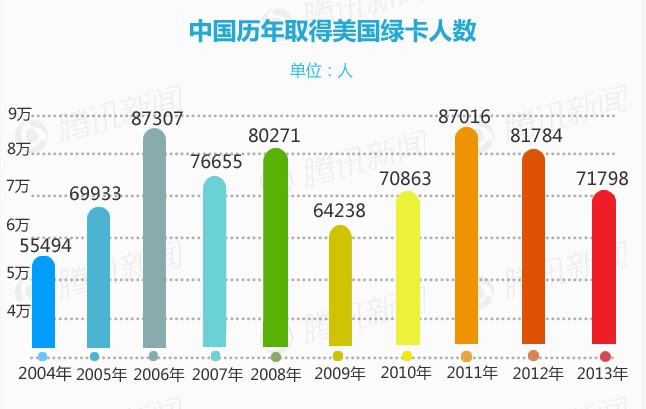【美国移民】终于等来了!就业创造及持续投资之政策备忘录 | 重要新闻
2015年8月10日,USCIS(移民局)对外公布了政策备忘录,PM-602-0121的草案,并寻求公众意见。该备忘录名为:针对EB-5申请的I-526和I-829表格之创造就业要求和持续投资的指导意见,名称很复杂,说简单了,就是涉及EB-5业内的两大关注点:就业创造和投资时限。

坦率地讲,EB-5业内对于这份政策备忘录,大概等了有一年多了,主要原因是中国投资者出现了EB-5签证排期,而签证获得的延迟会影响项目的就业创造时点和投资期限(或者还款周期)如何确定的问题,这是USCIS这个老革命碰到的新问题。不过,从2014年8月23日,AILA芝加哥大会上开始宣布中国投资者EB-5签证冻结,到今年4月13日IIUSA华盛顿大会上正式宣布中国投资者EB-5签证从5月1日开始,一直等了这么久,USCIS终于给出了一份应对排期造成的就业计算和投资期间的审案政策备忘录的草案,实在是姗姗来迟。
今天EB5Sir提供的是,Kyle Walker先生(IIUSA会员委员会主任/绿卡基金执行董事)就此草案的解读。有需要该草案英文原文的朋友,请微信公众号留言索取。
讨论的议题
•创造就业 - I-526表格I-829表格
•持续投资(Sustained Investment)
•处于风险状态(At Risk)的投资
•再投资(Redeployment of Capital Investment)
• 实质性变更(Material Change)
由于中国大陆出生的申请人面临排期的情况,创造就业的时点和持续投资的定义,已经变得越来越重要。
主要结论概述
1. I-526获批前的实质性变更(Material Change)
这份备忘录并没有改变USCIS,对于在I-526获批前的Material Change需要重新递交I-526申请的,这一重大立场。USCIS援引了Izummi判例,然而,这不是Izummi判例的实际体现(Carolyn Lee撰写了一篇很好的有关文章)。最根本的问题是,USCIS的态度将使得,在I-526的14-18个月的审批期间发生的Material Change,将会致使I-526需要重新递案,然后又是一个14-18个月的等待审理期间。不幸的是,这是一个非常低效和浪费资源的做法。
2. USCIS并没有改变其何时开始证明就业的政策
对于中国排期的情况,USCIS的态度是,认为其未必会带来显著不利影响,因此USCIS并不准备改变其对于,证明持续投资和创造就业生效时间,的现行政策。
3. I-829审理期间,并不需要维持就业创造
第3页,有一个段落,创造出来的就业不需要维持到I-829审理期间,只要申请人能证明就业已经由于其投资而创造出来即可。
EB5Sir:这是一个有利的点,就业只要创造出来即可,也没有强调要维持多久,所以即便因为排期而造成整个申请进程延长,并不是说所创造出来的就业一定要延长到I-829审批阶段。
4. 有条件居留状态之前创造的就业
第6页,USCIS指出,(由于排期)申请人可以获得有条件居留之前创造的就业,这些就业是有效的,而且申请人尚未获得有条件居留状态,将不被认定为Material Change。
5. 再投资
第7页,USCIS明确,在排期出现的情况下,如果项目按计划完成并创造来了足够的就业后,NCE(新商业企业)获得了投资款退还,此笔资金可以重新投入到另一个风险投资"at risk"活动中去,这样不会造成I-829被拒或撤销。再投资对于那些由于排期被延迟的申请人来说,符合风险资金的要求。
EB5Sir注:这里指JCE(就业创造企业)的项目完成后,按照协议还款给NCE,然后NCE可以继续去投资,而不是还款给投资者(因为排期造成的延迟,I-829尚未获批,要求投资”at risk“,不能还款给投资者)。
6. 关于还款/清算时间表的修订
第7页,USCIS声明,区域中心可以修改包括偿还计划或清算条文在内的文件,这样NCE可以继续运营(受排期影响的申请人两年的有条件居留状态),这样的变更将不被认定为Material Change。
EB5Sir注:这里指排期造成如果原定5年期还款,不能实现之后(此时I-829尚未获批故不能还款),NCE可以修改还款协议,延迟还款。
总体来讲,USCIS的这份备忘录,中规中矩。备忘录草案刚公布,尚不知道业内的大佬们的意见,就EB5Sir个人意见而言,USCIS对于排期的应对政策,对投资者有利的是,就业并不需要维持,不利的是,投资款需要一直维持到I-829获批,而且NCE可以调款去别的地方投资,这点需要投资者注意资金风险。
原文作者:Kyle Walker先生(IIUSA会员委员会主任/绿卡基金执行董事)。
On August 10th, 2015 USCIS released for public comments Policy Memorandum, PM-602-0121 – “Guidance on Job Creation Requirement and Sustainment of Investment for EB-5 Adjudication Form I-526 and Form I-829.” This Policy Memorandum (PM) provides guidance on job creation requirements and the requirement to sustain the investment during the conditional residence period.
Items Discussed:
·Job Creation – Form I-526 and Form I-829
·Sustained Investment
·At Risk Capital Investment
·Redeployment of Capital Investment
·Material Change
The questions of job creation timing and sustained capital investment have grown in importance as Mainland Chinese born petitioners face retrogression.
Summary of Key Findings:
1.Material Change prior to I-526 approval
The memo does not alter the USCIS position that a material change prior to I-526 approval would require a re-filing of the I-526. USCIS cites Matter of Izummi; however, that is not what matter of Izummi actually holds (Carolyn Lee has a good article on this). The bottom line is that USCIS’s position remains that a material change during the 14 to 18 months that an I-526 is pending requires re-filing and a second waiting period of 14 to 18 months for adjudication. Unfortunately this is an inefficient and wasteful practice.
2.USCIS is not changing its policy as to when the period for proving job creation commences
Regarding China retrogression, USCIS takes the position that it cannot predict that retrogression will have any significant adverse effect, and therefore USCIS is not prepared to change its current policy regarding commencement of the period within which sustained investment and job creation must be proved.
3.Jobs need not be sustained through the time of I-829 adjudication
In the middle of page 3 there is a helpful paragraph that states that created jobs need not be sustained until the time of I-829 adjudication, as long as the petitioner can show that the jobs were created as a result of the petitioner’s investment.
4.Jobs created prior to start of conditional status
On page 6, USCIS includes a helpful statement that if jobs are created based on an petitioner’s investment PRIOR to the time when the (Chinese retrogressed) petitioner can get conditional status, those jobs count and the fact that the petitioner does not yet have conditional status is NOT a material change.
5.Re-deployment of Investment Capital
On page 7, USCIS confirms that in the case of retrogression, if the NCE obtains refund of investment after the project is completed according to plan and sufficient jobs are created, the funds can be re-deployed in another “at risk” activity without causing the petition to be denied or revoked. Re-deployment appears to meet the requirement of “at risk” funds for those petitioners who are delayed by retrogression
6.Amendments regarding repayment/liquidation schedule
Also on page 7, USCIS states that an RC may amend documents that include a repayment schedule or liquidation provision to allow the NCE to continue to operate through the two-year conditional status of its retrogressed petitioners, and this will NOT be considered a material change.
